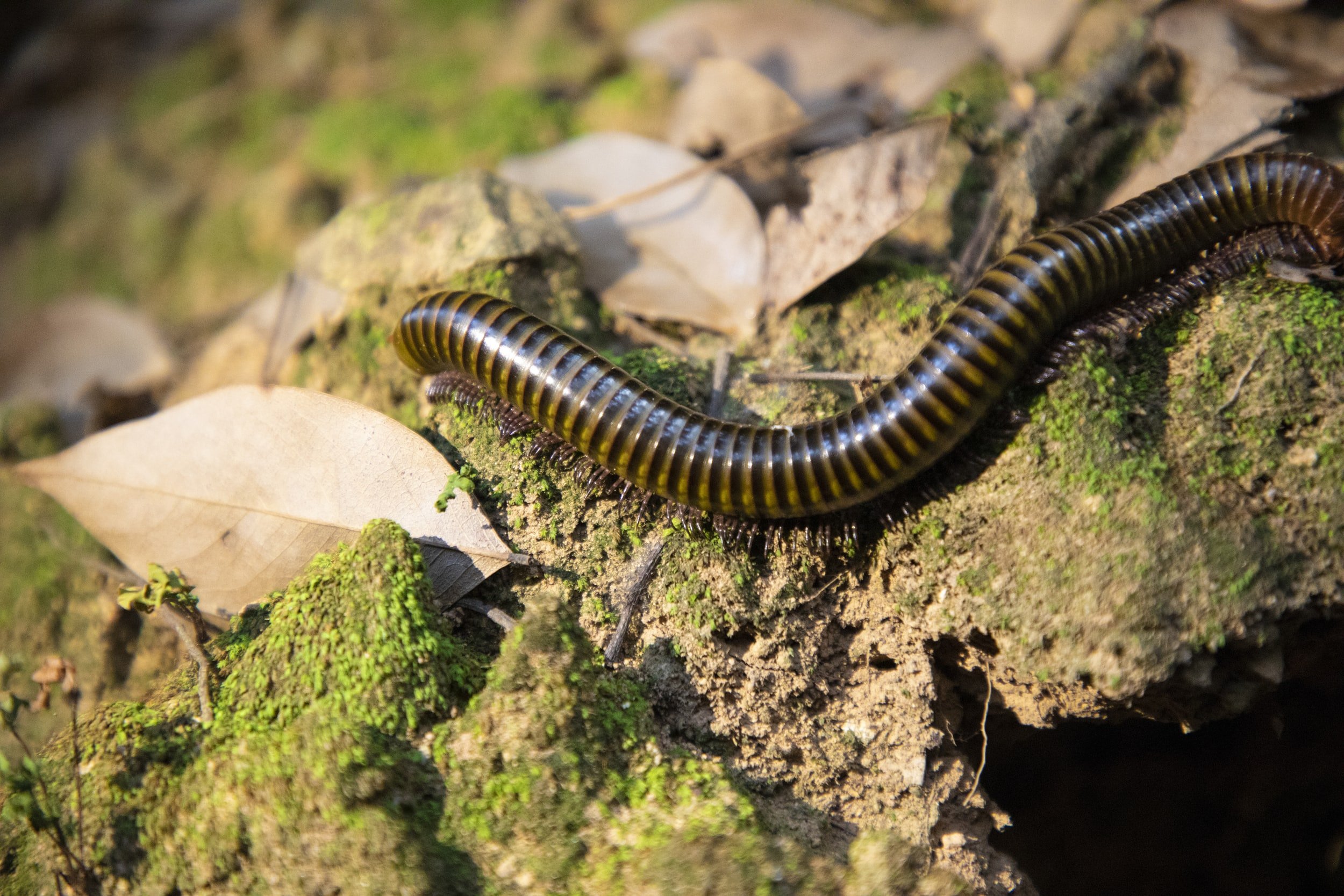
Millipedes
People call millipedes “thousand-legged worms” for a good reason. These gray-brown bugs grow to be a little over one inch long, and they have many sections of legs (with a leg count between 30 to 400!). While millipedes may look freaky due to their long and slender bodies, they don’t bite. However, they can stir up trouble for homeowners.
Typically, you’ll find millipedes crawling around damp areas outside. They love habitats near decaying wood, grass clippings, mulch, and leaf litter. Millipedes need to keep their bodies moist, so they hide during sunny days and prefer to explore during the night. Look closely in your outdoor gardens, flowerbeds, and lawns — millipedes love to rummage around there for tasty treats like decaying wood and organic matter. However, if their favorite habitats become dry or scarce, these slimy bugs start to venture indoors.
Signs of an Investation
They may first congregate around your porch or patio to seek dark, moist spots of wood and pillage for sustenance. Watch out for exposed crawl spaces — millipedes may sneak in through vents and cracks for a spot near damp wood.
Typically, homeowners find millipedes indoors during fall and winter because of the drier and colder temperatures. These resilient insects enter garage doors or windows, waiting for their outdoor homes to return to damp homeostasis.
Once they find an entrance to your home, millipedes will snack on decaying wood, vegetable matter, and trash. If you start to see excrement or molted skin on the floor, a millipede infestation could very well be on your hands. If you try to take out one of these slender pests, they may release an unpleasant odor as a defense mechanism, and this smelly liquid can irritate skin and burn eyes.
-
They usually dwell in damp areas outdoors but can migrate inside if their habitat outdoors becomes too hot and dry. Once inside, they may hide under furniture or boxes of stored items. When they come to a home, millipedes gather on porches and patios. They climb the foundation of the home and they often find entryways such as:
Basement doors and windows
Crawlspace vents
Doors with missing weather stripping
-
Millipedes do not bite or sting, nor do they do any damage to stored food, structures, or furniture. However, there are some species of millipedes that excrete a defensive fluid that irritates the skin of people who handle them or otherwise come into contact with those toxic millipede species.
Since the pests are most active at night, their appearance can scare homeowners by moving boxes or other items. Millipedes also move in large numbers, so they can become a major nuisance and cause quite a fright to unsuspecting people or pets.

